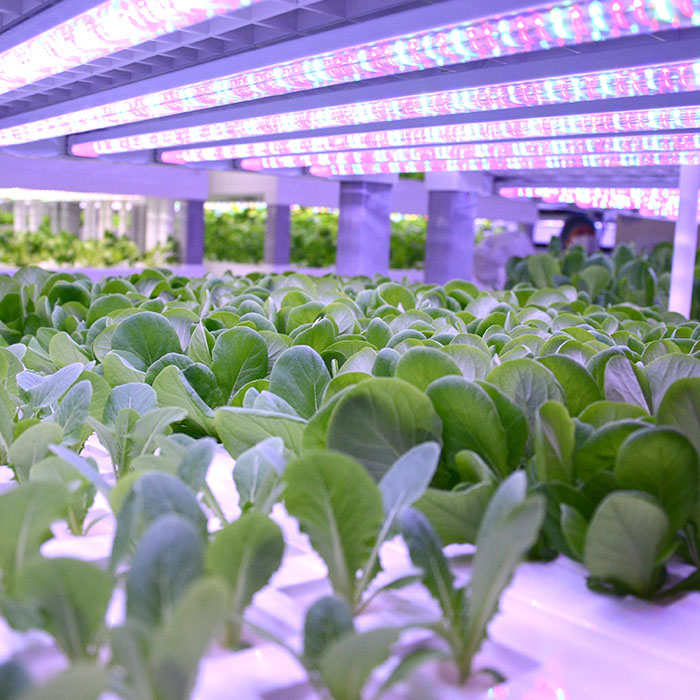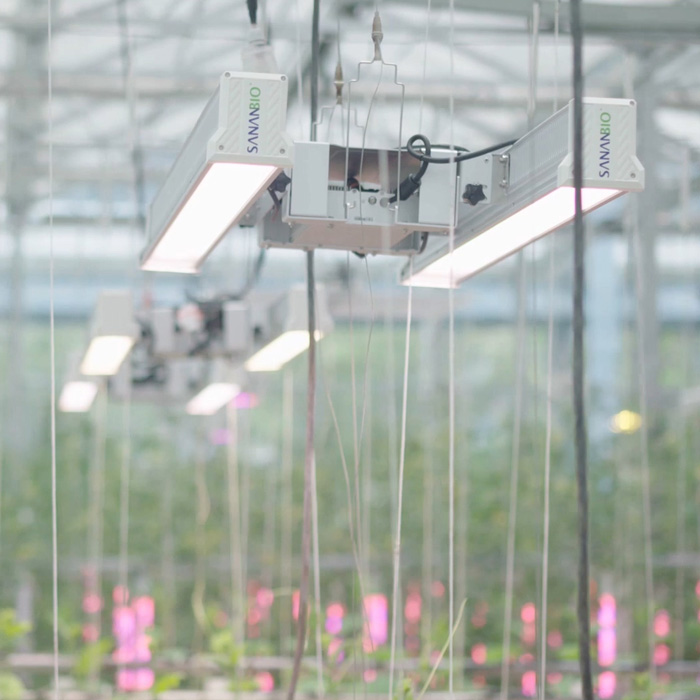n areas with high altitude, high latitude, lack of water resources, barren land, and high urbanization and dense population resulting in limited land for plant planting, various plant growth factors such as effective lighting time, heat intensity, humidity and so on are affected. In addition, climate change makes the outdoor growth of plants face many problems.
This is why the natural photosynthesis of plants may not meet the growth expectations.
Therefore, this is why you should use the LED plant growth lamp. First of all, led planting lamps are environmentally friendly and the most important advantage. Fast start, low power consumption and no flash are the advantages of energy saving.

Similarly, if the LED plant growth lamp is used, the photosynthesis of plants will be enhanced. If conventional lighting cannot be done, the growth rate of plants will increase. For example, the growth of spinach and radish will be improved, and the morphological indicators will also be improved.
Similarly, if your country is located in an area dominated by winter, led plant growth lights will be very beneficial.
There are more advantages to using it. Here, I will discuss with you how to use LED plant growth lamp and other aspects of it. If you are facing these problems or want to know about them, please stay with me.
What is led plant lamp?
Without knowing what led growth light is, the idea of using it cannot be realized. Therefore, led plant lamps are mass-produced lamps. They are plant growth lamps that save energy and space. LEDs have several applications.
Previously, LED lights were only used for auxiliary lighting. Growers can use hid planting lamps, but to get more power, if plants need additional light, we need to use LED planting lamps.
With the improvement of LED, larger LED panel can provide light for the whole growth chamber. When other lighting systems require large ballasts and cooling systems, LEDs are not used. You can hang a round or square panel or any other shape above the plant.
Accurate wavelength output
Some people claim that plants cannot grow under LED lights. But now, with the progress in this field and the discovery of blue LED, this view has changed.
For plants, specific wavelengths of light are necessary for photosynthesis and growth.
Scientific experiments confirm that red and blue wavelengths are the most important wavelengths. Workshop lights or traditional LED lights do not emit blue and red light, which is very important for plant growth. These have particularity for human vision.

LED chip quality
The diode shall have a certain specification to emit the actual wavelength. Famous manufacturers use a sophisticated process, that is, the diodes they produce will emit the correct light wavelength. In addition, other manufacturers also produce low-cost LEDs to attract budget shoppers.
Inexpensive LEDs may not emit the specific wavelengths required by plants, and light intensity may vary. The customer should be aware of these facts.
How to use LED plant lights?
Here is the process of using LED plant growth lamp. Follow the steps:
Step 1:
Adjust the height of the light hanging above the plant.
Early plant growth stage – place the lamp about 300mm above the plant. Therefore, it ensures a minimum inter node length and provides inter node.
Vegetative period – now the distance between light and plants has been increased, which may be between 300-600 mm. Plants with many leaves need to reduce the light so that it can reach the lower branches of these plants. In addition, if your factory needs a higher lighting level, keep the LED above 300 mm; If we need a lower lighting level, keep the LED above 600 mm.
Flowering, germination stage – here you can also maintain a height of 300-600 mm from the crown. However, 400mm is a favorable height above the roof.
Step 2:
Change the way of watering. If you are just starting to use LEDs, watering may cause some problems.
The watering guidelines are mainly based on HPS lighting. Evaporation occurs during this process. That’s why we need watering. However, when it comes to LED planting lights, watering or feeding is not a problem. Therefore, watering may cause danger to plants.
Step 3:
Then the plants need to be fed. But this is not what you want. In the presence of led growth lamps, there are feeding specifications.
You need to provide 30% HPS lighting source for plants. Add cal MAG when your plants grow under LED illumination.
In hydroponic systems, evaporation is reduced, so you have to provide less nutrition.
Step 4:
In winter, you need to provide more heat in your room. This will promote the growth of plants. The heat of the growth area is much lower than that of the HPS lighting. Therefore, in winter, this may cause some problems, so if you use LED plant growth lights, you should pay attention to plants.
Post time: Jun-13-2022